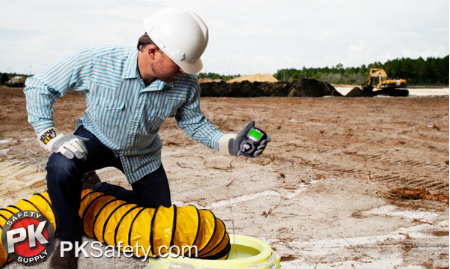Ventilation is the number one way for workers to control and disperse hazardous atmospheres in a confined space. For this discussion, the prime objective in ventilating a confined or enclosed space is to render it safe for workers. To reach this level of safety three requirements must be met. If your ventilation unit is too small to handle the job, a safe atmosphere can't be maintained, and workers should not be permitted to enter.
Let's go over our atmospheric checklist before we get into the calculations for air turn over and the size of an appropriate blower/ventilator. First off, oxygen (O2) content needs to be maintained between 19.5 and 22 percent. If flammable vapors or gases are present, they must be kept below 10% of their lower explosive level. Finally potentially toxic materials must be kept below their personal exposure limit (PEL) or under the IDLH levels (immediate danger to life and health) if using anything less than supplied air respirator protection.
In addition to ventilation, an appropriate gas monitor needs to be used to test the atmosphere in the space at all levels (top, middle, and bottom). Depending upon the hazards believed to be present in the area, a simple 4-gas monitor measuring hydrogen sulfide, carbon monoxide, oxygen, and the lower explosive levels of combustible gases with an internal pump will suffice.
Initial testing with the monitor will let you know when the air in the space has cleared. But ongoing monitoring using personal diffusion monitors like the BW GasAlert MicroClip XL in the space must continue as well to make sure levels don't spike while workers are completing their assignments.
Ventilation air exchange is the rate which your ventilation unit is able to replace the air inside a space. Units such as the Allegro 12 in. Axial Blower with Canister and Ducting have a specific Effective Blower Capacity (CFM) which takes into account the movement of air through the ducting and can be graphed on a ventilation nomograph to figure out how long it will take to clear your specific space.
Another thing that should go without saying, but it couldn't hurt to point out is the blower/ventilator should be set up in a clean air environment. Too many teams have set the unit next to a generator or truck with a running engine. Pushing the confined space atmosphere out only to replace it with carbon monoxide from a gas engine would be funny if it wasn't so dangerous.
If you'd like more pearls of wisdom such as this, or want a recommendation on the right blower/ventilator for your needs, please don't hesitate to call 800-829-9580 or visit us online at pksafety.com.

